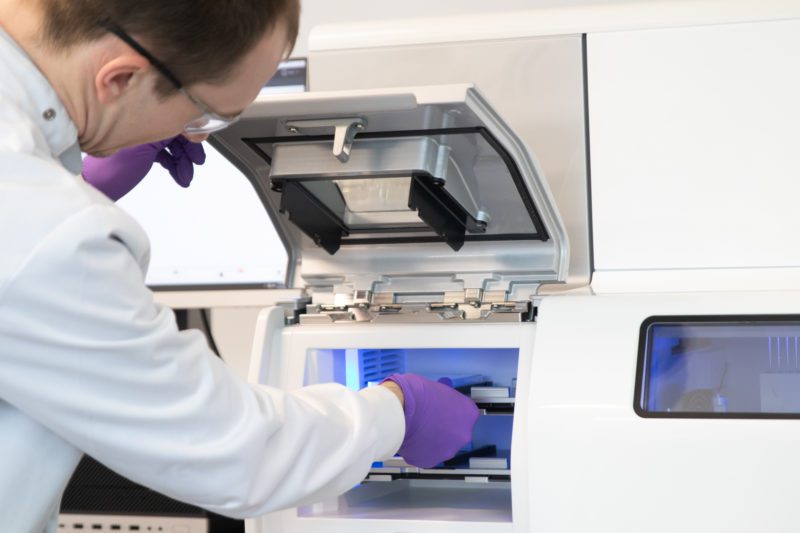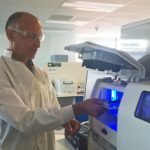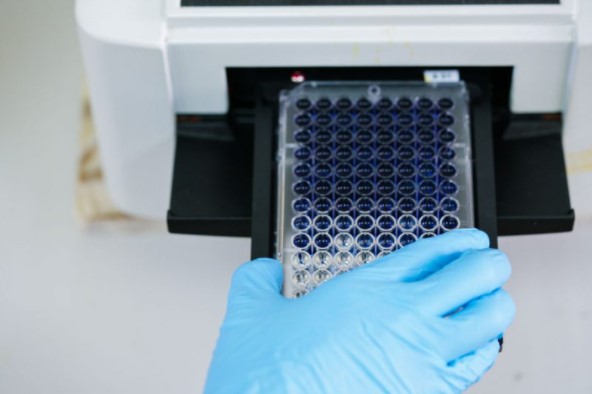The art of selecting the best HTS hits through biophysics
By its very nature, a small molecule HTS identifies large numbers of potential hits, and there is real skill in working out which are the best to follow up. How can these hits be characterised, and then prioritised for follow-up?

All the techniques have their advantages, and their limitations. The key is in picking the right combination of methods.
Surface plasmon resonance (SPR)
SPR is a powerful method that gives real-time kinetic information about how a molecule binds to its target protein. Its downside is that the protein must be immobilised onto a surface, which is not possible for all target proteins.
Nuclear magnetic resonance (NMR)
NMR is a familiar method that can potentially give important structural information about how and where the molecules bind to a protein. However, there are limits to the size of target protein that can be investigated, and it can only be used for molecules that do not bind too tightly.
Mass spectrometry (MS)
MS is another widely used technique. Mass spec methods can be extremely sensitive, but some pose significant technical challenges that require expert analysts.
Thermal shift assays (TSA)
TSA, meanwhile, are far more straightforward to run, and are high throughput. However, false positives and false negatives are not unusual, so these assays are best used in conjunction with another technique to confirm the results.
Microscale thermophoresis (MST)
MST has the advantage that the protein does not need to be immobilised. However, it cannot give the sort of kinetic information that SPR gives; rather, it can only give the binding affinity.
Isothermal titration calorimetry (ITC)
ITC can provide a wealth of information about the thermodynamics of the binding. But a large amount of protein is required, so it is impractical for those targets where the protein is in short supply.
 All of these techniques are important tools in HTS, and require skilled operators to run them. But the real expertise comes in the ability to choose which are the best ones to employ in any given situation – and explain the data that they generate.
All of these techniques are important tools in HTS, and require skilled operators to run them. But the real expertise comes in the ability to choose which are the best ones to employ in any given situation – and explain the data that they generate.
In the early stages of hit finding and validation, a high throughput technique such as SPR, MST or thermal shift is desirable to rapidly distinguish genuine binders from artefactual effects on the target (e.g., inhibitors of enzyme that are acting through aggregation, metal chelation, redox effects, etc.). Later in the hit validation and subsequent hit to lead exploration, it may be preferable to focus more on information rich approaches that can provide insights into the mode of compound binding, such as ITC, NMR, and again SPR, but with the additional possibilities of kinetic and competition analysis.
 It is often best to use more than one biophysical technique sequentially or in parallel, to provide complementary information. The ability to run all these methods, and select the best in each situation, enables us to make the most of our HTS capability at Sygnature.
It is often best to use more than one biophysical technique sequentially or in parallel, to provide complementary information. The ability to run all these methods, and select the best in each situation, enables us to make the most of our HTS capability at Sygnature.
Sygnature scientists have authored a book chapter that explains how biophysical methods are used to evaluate hit molecules identified in high-throughput screening (HTS). The book, entitled High-throughput screening – methods, techniques and applications, covers numerous aspects of HTS in drug discovery, and the Sygnature team shared their insights about how they apply biophysical methods. The chapter covers several of the key biophysical techniques used to pinpoint the best molecules.
High-throughput screening – methods, techniques and applications is published by Nova; and Chapter 7, on biophysical hit evaluation, was written by Scott Pollack, Rupert Satchell, Juliet Morgan and Patrick J. McIntyre of Sygnature’s Bioscience department.
https://novapublishers.com/shop/high-throughput-screening-methods-techniques-and-applications/
If you have any questions, would like to discuss our biophysics, HTS capabilities or drug discovery in general then we’d love to hear from you. You can get in touch by using any of the contact forms or by emailing us at [email protected]
